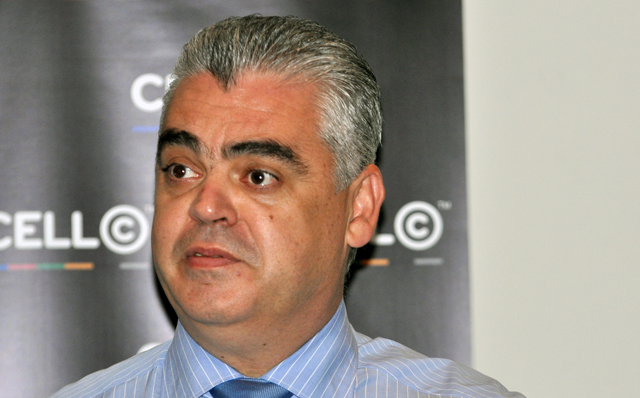
Cell C will survive with or without “asymmetry” in mobile termination rates, but there is a principle involved that must be defended, the mobile operator’s CEO, Jose Dos Santos, has said.
“This company will survive, irrespective of the outcome,” Dos Santos said in an interview with TechCentral on Tuesday. “It’s been going for 13 years without asymmetry — why shouldn’t it continue? But you have to fix the imbalances of the past.”
Last week, Dos Santos slammed communications regulator Icasa’s proposed new call termination rate regulations, accusing it of making a “dramatic U-turn”.
Although Cell C will continue to benefit from “asymmetry” in the rates — it will pay bigger rivals MTN and Vodacom less than they pay it to carry calls between their networks — the level of that asymmetry will be reduced dramatically under Icasa’s proposed rates.
Icasa has until the end of September to publish the final call termination regulations. It has proposed new termination rates for the period 1 October 2014 to 28 February 2018, which will result in it reducing both fixed and mobile calls to just 8c/minute from 1 March 2017.
“Icasa is now proposing a complete U-turn in its implementation of government policy in respect of pro-competitive regulations and reducing the cost to communicate,” Dos Santos said last week.
“The massive proposed reduction in asymmetry completely eliminates any pro-competitive remedy. Icasa is now only proposing a marginal cost recovery, which is not, in terms of many international benchmarks and literature, the basis on which asymmetry is determined, and will have the effect of entrenching the duopoly in the South African market today.”
Dos Santos told TechCentral on Tuesday that many people are “missing the point” about the purpose of asymmetry. “I think we’ve lost some aspect of where we’ve come from and why we’re having this debate. It’s all about competition. The landscape has to allow you to compete.
“This has to do with creating a telecommunications landscape that protects the country, [encourages foreign direct investment] and makes sure that this sector continues to be competitive,” he said. “Hypothetically, if Cell C didn’t exist, would the two incumbents [MTN and Vodacom] offer the same value proposition they get today? It’s unlikely.”
He said asymmetry is meant to be used to create a pro-competitive market and should be set entirely at Icasa’s discretion. “Nothing says it should be based on cost,” Dos Santos said, adding that a high level of asymmetry is needed to “remedy the imbalances that were created in the industry” in the past.
“A lot of people make statements about why you [Cell C] need asymmetry after 13 years [in business]. But the other rivals [Vodacom and MTN] had 400% asymmetry for 10 years. Telkom gave the two operators 400% asymmetry. They invested indirectly with taxpayers’ money.”
He said asymmetry is not about the money that Cell C makes from Vodacom and MTN, but rather the fact that it allows the company to compete more aggressively in retail rates. “I can’t disclose the financial impact that asymmetry has, but it’s not hundreds of millions of rand. This is an issue of principle that allows me to compete at the retail price level.”
Dos Santos won’t say whether Cell C will challenge Icasa’s regulations in court if the draft regulations are gazetted as they stand. “You don’t resolve macroeconomic issues by going to court,” he said. “You resolve this through dialogue. But we have two dominant operators who don’t understand the concept of dialogue and a pro-competitive environment.” — (c) 2014 NewsCentral Media

